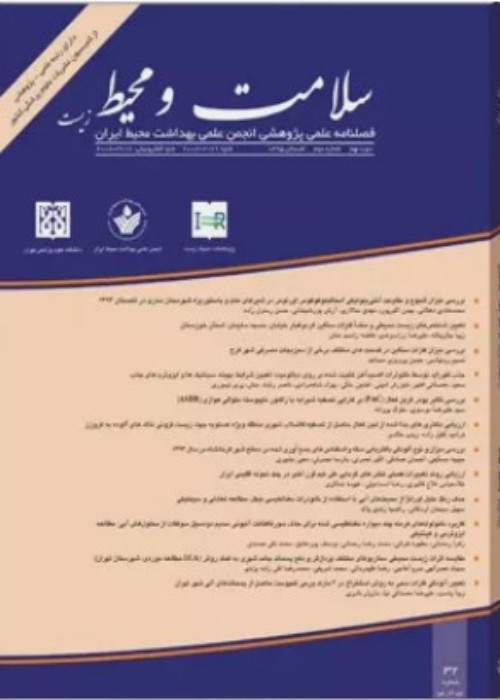Modeling adsorption on fluoride and application of Box- Behnken design and response surface methodology for arsenic(V) removal from aqueous solution using Nano-Scale Alumina on Multi Walled Carbon Nanotube
Author(s):
Abstract:
Objective and
Background
Fluoride is an element widely found in the earth crust. Advantages and disadvantages of fluoride in the human body are depended on its concentration. Long-term consumption of drinking water contaminated with arsenic can cause adverse health effects such as skin lesions and cancer in humans. The aim of this study was to study efficiency of nano alumina on multi walled carbon nano tube for removal As(V) and fluoride from aqueous solution.Materials And Method
In this study, nano-scale crystalline alumina was synthesized on single walled carbon nanotube by sol-gel method for using as a sorbent for solid phase extraction of Fluorine ion and arsenic(V). Response surface methodology based on Box-Behnken was used to assess the effect of independent variables on the response function and prediction of the best response value. In this study, effect of different parameters, such as contact time (10 to 120 min), pH (3-9), adsorbent dosage (0.25-1.5 g/L) and initial concentration of fluoride (2-8 mg/L) on efficiency of process was investigated. The structure of nano-scale alumina on multi walled carbon nano tube was determined by XRD and SEM techniques. Moreover, Freundlich and Langmuir isotherm models were used to calculate equilibrium constant.Results
It was found that by increasing contact time and adsorbent dosage the rate of fluoride removal increased. However, by increasing pH and initial concentration the efficiency of fluoride removal decreased. High value for R2 (0.94) shows that removal of arsenic(V) can be described by this model. The Freundlich isotherm was the best fitted graph for experimental data with R2 more than 0.997.Conclusion
In this study, it was observed that efficiency of arsenic(V) and fluoride removal was greatly increased by using nano-scale alumina on multi walled carbon nanotubes (MWCNTs).Keywords:
Language:
Persian
Published:
Iranian Journal of Health and Environment, Volume:8 Issue: 3, 2015
Pages:
309 to 323
magiran.com/p1497997
دانلود و مطالعه متن این مقاله با یکی از روشهای زیر امکان پذیر است:
اشتراک شخصی
با عضویت و پرداخت آنلاین حق اشتراک یکساله به مبلغ 1,390,000ريال میتوانید 70 عنوان مطلب دانلود کنید!
اشتراک سازمانی
به کتابخانه دانشگاه یا محل کار خود پیشنهاد کنید تا اشتراک سازمانی این پایگاه را برای دسترسی نامحدود همه کاربران به متن مطالب تهیه نمایند!
توجه!
- حق عضویت دریافتی صرف حمایت از نشریات عضو و نگهداری، تکمیل و توسعه مگیران میشود.
- پرداخت حق اشتراک و دانلود مقالات اجازه بازنشر آن در سایر رسانههای چاپی و دیجیتال را به کاربر نمیدهد.
دسترسی سراسری کاربران دانشگاه پیام نور!
اعضای هیئت علمی و دانشجویان دانشگاه پیام نور در سراسر کشور، در صورت ثبت نام با ایمیل دانشگاهی، تا پایان فروردین ماه 1403 به مقالات سایت دسترسی خواهند داشت!
In order to view content subscription is required
Personal subscription
Subscribe magiran.com for 70 € euros via PayPal and download 70 articles during a year.
Organization subscription
Please contact us to subscribe your university or library for unlimited access!


